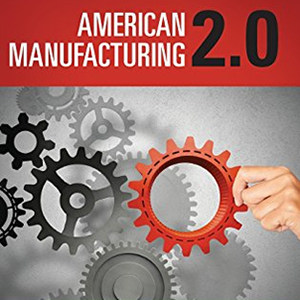
It’s The Culture, Stupid
By Steven L. Blue
When I talk to CEO’s about how to transform their businesses, the first thing I say is “It’s The Culture, Stupid.” I talk about how most cultures are by default, not design and how cultures by default wreck organizations. Their eyes gloss over because they don’t believe culture can have a major impact on an organization.
If you don’t believe culture can wreck your organization, I have two words for you. Wells Fargo. Wells Fargo has a culture grounded in what I call “bumper sticker” values. “Bumper sticker” values look good on the boardroom wall, but they have no relationship to the real values of the organization. Wells Fargo’s flagship bumper sticker values are “ethics,” and “do what’s right for the customer.” Huh? How could a company with those values employ deceptive sales practices that created over 2 million ghost accounts? The answer is they couldn’t. Those are only the boardroom slogans. Wells Fargo values profit above all else. Above ethics. Above what is right for the customer. The problem is the CEO wasn’t aware of those real values. He was in fat, dumb, and happy land drinking the bumper sticker values cool-aid. And by the time he realized the truth, it was too late.
Does your organization have bumper sticker values? Perhaps you should find out before it is too late. Here’s how:
1.) Do an organization-wide values check-up. But don’t ask the executives. They will tell you what you want to hear. Conduct professional organization-wide anonymous surveys to find out what the real values of the organization are. You will either be satisfied or terrified with the answers. If you are satisfied, great. If you are terrified, you need to do something about it-fast.
2.) Do a deep dive with your key people and a few rank and filers to determine the kind of values you want the organization to have. Don’t concoct values that sound good. Don’t pick values that are boring, useless, and trite. Nobody buys the trite values anyway. Pick values that have real meaning to your employees, customers, and shareholders. Values that can propel the organization forward. I have developed the 7 Values of Ingenuity, a highly integrated system of values that when properly sequenced and implemented fuels unbelievable performance and creativity. Your values may be different. The key is to make them yours, make them original, and make them empowering.
3.) Once you have your set of values, be certain people at the top believe them and demonstrate them every day. Remember you can’t expect people below to do what the top does not. This is the hardest part but it is essential you build leadership credibility first.
4.) Communicate the new values widely. Explain how they were selected, why they were selected, and what you expect from people going forward. Don’t delegate this to the human resource department. If the new values are to believed and embraced, it has to come from the top.
5.) Cultures are formed and maintained by values and organizational behavior. Policies and practices determine how organizations behave. Wells Fargo engaged in deceptive sales practices because of sales compensation programs that incentivized them to behave that way. Be sure your policies and practices support the new values. That means you will need to change some of them because they have probably been supporting the old values.
6.) Make demonstrating the new values a key component in performance reviews, compensation programs and promotions. And be prepared to dismiss people who refuse to, or unable to embrace the new values.
7.) Don’t let anyone in the front door that doesn’t believe in the values. Be sure you know where candidates for hire stand on your values. And I don’t care how good they are technically, if they don’t believe in your values, don’t hire them. Period. Once you have established a values-based culture, bringing new people in that don’t support them will eventually cause the culture to come apart at the seams.
Only after you have grounded the organization in a culture based upon empowering values can you move on to the “hard stuff.” Most CEO’s want to get to the hard stuff right away. They don’t want to bother with the “soft stuff” of values and culture. But what is the point of launching a new product if the organization values hanging on to the old ones? What is the point of implementing lean if most people could care less about waste and efficiency? Why spend a bunch of money on productivity improvement if people aren’t committed to improving productivity? It’s pointless unless you get the culture right first. Only then can you move on to the hard stuff.
And speaking of impatient CEO’s (I know how they are, I am one!), this is not a check the box and move on to the next thing. This will be a multi-year process that has to be done carefully and deliberately.
Finally, do a values check-up from time to time. No matter how good your policies and practices are, eventually the culture will start drifting toward default and away from design.
Steven L. Blue is the President & CEO of Miller Ingenuity, a global supplier of mission-critical solutions in the transportation industry and author of the new book, American Manufacturing 2.0: What Went Wrong and How to Make It Right. To purchase this book, please visit our Amazon Bookstore.
For more information, please visit www.SteveBlueCEO.com, www.milleringenuity.com and connect with Blue on Twitter, @SteveBlueCEO.


